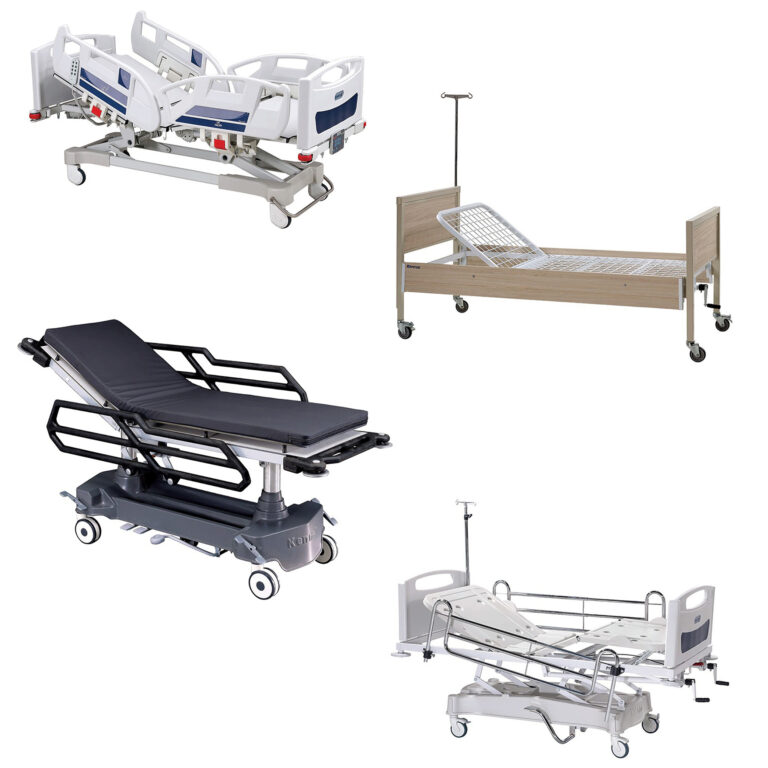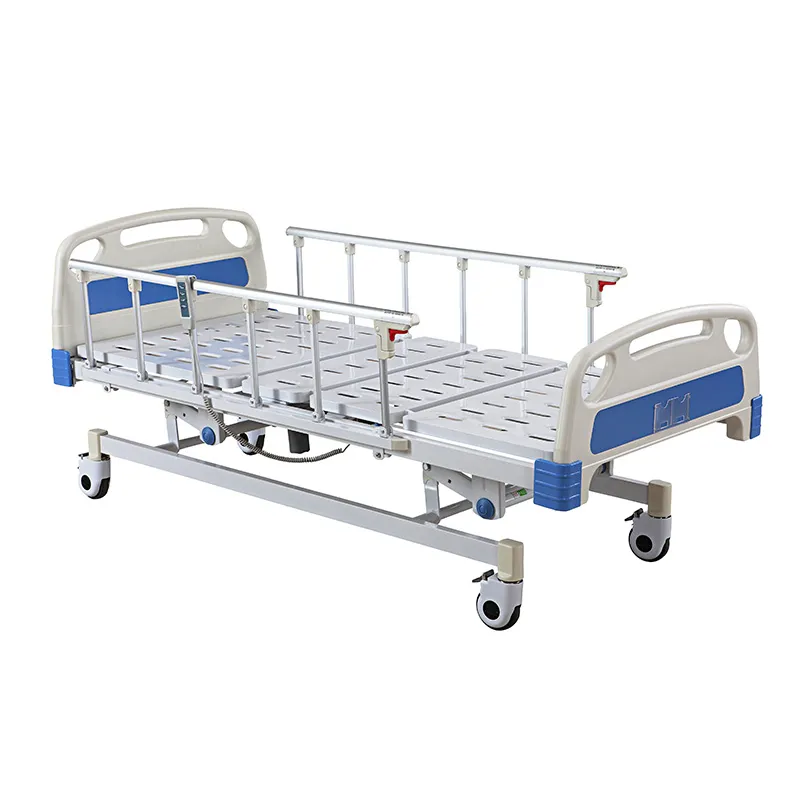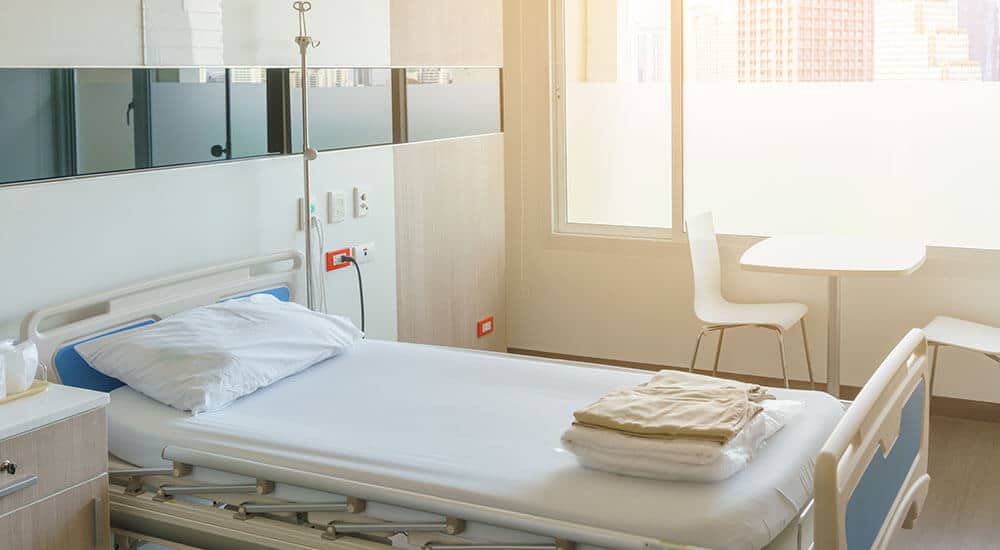3 Easy Facts About Hospital Beds For Home Use Explained
3 Easy Facts About Hospital Beds For Home Use Explained
Blog Article
Some Known Details About Hospital Beds For Home Use
Table of ContentsFacts About Hospital Beds For Home Use UncoveredFascination About Hospital Beds For Home UseHow Hospital Beds For Home Use can Save You Time, Stress, and Money.The Of Hospital Beds For Home UseThe 9-Minute Rule for Hospital Beds For Home UseThe Greatest Guide To Hospital Beds For Home UseGetting The Hospital Beds For Home Use To Work
There are 3 primary types of health center beds: manual, semi-electric, and fully-electric. Nevertheless, even more kinds of clinical beds exist and they are noted below. These beds use hand cranks to change the bed's height and raise and decrease the head and the foot. Hand cranks are commonly discovered at the foot of the bed and require an individual that is physically qualified of operating.
Semi-electric beds have an electric motor to raise and lower the head and foot sections of the bed (hospital beds for home use). Full-electric beds have an electrical motor that can elevate the head and foot sections of the bed as well as the entire elevation and positioning of the bed.
Hospital Beds For Home Use for Dummies
There are several types of healthcare facility beds, each designed to satisfy specific person demands. Below are some usual types: This is the most usual type of healthcare facility bed, created for general medical usage.
Lower to the ground than a conventional bed. This sort of bed is created for larger individuals, with a broader structure and greater weight ability than a typical bed. This type of bed is created specifically for youngsters, with smaller sizes than a typical bed. Special features such as complete size side rails and anime style.
This type of bed is made for seriously sick individuals that call for open monitoring and specialized medical equipment such as ventilators and mixture pumps. This type of bed is developed for use during labor and delivery, with flexible placements and functions to support the mom and child throughout the birth process.
What Does Hospital Beds For Home Use Mean?
Numerous function and the accessories perform expanding grip to various components of the vertebra and the extremities without relocating the human body. These are simply a couple of examples of the kinds of medical facility beds available. The certain kind of bed utilized will depend on the patient's problem, medical requirements, and other variables.
Right here is the important things you require to recognize. A one-function health center bed is a medical bed that allows a client to move only the head or foot section up or down. A 2 function healthcare facility bed commonly describes a sort of clinical bed that has 2 flexible features to assist people in medical facilities or treatment facilities.

8 Simple Techniques For Hospital Beds For Home Use
A 7-function ICU bed is a kind of medical bed that provides numerous adjustable features to support critically unwell clients in an extensive care device (ICU) (hospital beds for home use). The 7 functions typically consist of: Back-rest modification: The backrest can be adapted to various angles to help the patient stay up or rest conveniently
Height change: The bed can be raised or decreased to make it easier for individuals to obtain in and out of bed, and for caregivers to useful reference give treatment. Trendelenburg placement: The entire bed can be tilted to promote blood flow and blood circulation in the body. Reverse Trendelenburg setting: The bed can likewise be slanted in the contrary instructions to advertise blood circulation and flow in the top body.
While more inexpensive than electrical designs, these beds call for physical effort for modifications. The primary benefits of manual beds are their price and reliability, as they do not depend on power. The demand for manual initiative can be a constraint in scenarios where quick modifications are needed or where caregivers encounter physical challenges.
Top Guidelines Of Hospital Beds For Home Use
They are appropriate for people that call for minimal repositioning for comfort or clinical demands. Semi-electric hospital beds provide an equilibrium of guidebook and electric controls. The head and foot sections are generally readjusted with electrical controls, while the elevation is changed by hand. These beds give an optimal middle ground between manual and totally electrical choices, using simplicity of usage without the complete expense of electric versions.
Semi-electric beds are fit for individuals who need modest modifications to the head and foot sections yet can take care of without frequent height adjustments. This makes them an economical solution for those looking for comfort and ease without the requirement for consistent repositioning. Fully electric hospital beds include electrical controls for smooth adjustments to the height, head, and foot areas.
Specialty healthcare facility beds, such as ICU beds, long-lasting care beds, and bariatric beds, are very carefully designed to deal with specific clinical demands. These beds use customized treatment for varied individual groups, enhancing both results and convenience. In the following sections, we will certainly check out the main sorts of specialty medical facility beds, detailing their specific advantages and applications.
With years of experience in producing electrical linear actuators - hospital beds for home use discover this info here and close partnership with the medical care sector, TiMOTION is well-positioned to give trustworthy healthcare remedies. Our vertically integrated firm handles every step of the manufacturing procedure, from design to actuator assembly, guaranteeing we supply remarkable value and personalized remedies customized to your particular demands
The smart Trick of Hospital Beds For Home Use That Nobody is Talking About

To find out more about integrating these modern technologies right into your products, contact us today. More reading:.
Information is sourced from the Medicare Expense Report. Accessed January 2025. Short-term severe treatment healthcare facilities have the highest possible typical variety of beds at 187. They are the most usual kind of healthcare facility in the united state and compose more than 50% of united state medical facilities. Children's hospitals have 178 beds usually and VA medical facilities average 175 beds.

Little Known Facts About Hospital Beds For Home Use.
A health center bed is a bed developed especially for medical functions. It is not only a place for individuals to relax, but likewise a system for medical operations. Unlike normal home beds, medical facility beds normally have adjustable functions, which can facilitate clinical staff to make different changes according to the needs of patients, such as changing the height, disposition, and assistance angle of the back and legs of the bed.
Report this page